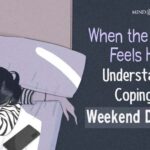Psychology News – In a bid to understand the dynamism of the sympathetic nervous system (SNS), a study examined threat-conditioned physiological responses in adults participating in a haunted-house experience. The results yielded significant contributions for the field of cognitive and social psychology.
A study examined the physiological responses geared towards survival from elicited threats in “naturalistic contexts”. For the experiment, it used a safe yet intensive, immersive, live-action threat environment such as a haunted house.
A study, conducted with the Association for Psychological Science, studied the electrodermal activity in 156 adults, who participated in small groups in a 30-min haunted-house experience. Providing an uninterrupted experience, the haunted-house setting included 17 rooms with various immersive threats such as suffocation, an oncoming speeding car, a volley of pellet shots, etc. The participants wore real-time physiological-monitoring wristbands to measure their electrodermal activity. Before commencing the visit as well as after the experiment, they rated their ‘expected fear’ on a scale of 1–10.
The chief aims of the study involve understanding the dynamism of the sympathetic nervous system (SNS) and how “naturalistic contexts” influence the body’s biological response to threats. It examined the social context in group composition, threat imminence, intrapersonal factors of fear, and a “baseline orienting response” (or the participant’s sensitivity to threats). Skin conductance (slow or rapid) levels and (frequency and levels of) responses were also measured.
The findings, published in Psychological Science, reveals a positive correlation between the number of friends and tonic arousal (or the body’s overall physiological response to emotional distress). This is attributed to “fear contagion”. On average, the larger the group of friends, the higher was the registered physical response. There are also positive associations between unexpected attacks, subjective fear, and phasic activity (frequency and amplitude). Individuals who were more cued-in to threatening events were also seen to be more psychologically prone to fear. The researchers also found links between dissociable sensitization effects and baseline orienting response. Participants showing initial strong responses to the first room of the haunted house showed increased responses in the other rooms and vice versa.
The study is unique in its examination of the evolutionary “fight or flight” human response. Its fun and innovative approach surpasses the ethical and practical constraints of human lab experiments around threat-conditioned responses and group psychology. In fact, the lead author, Sarah M. Tashjian of the California Institute of Technology, enthusiastically claimed that this research is a “major advance for cognitive and social psychology.”
To Know More You May Refer To
Tashjian, S. M., Fedrigo, V., Molapour, T., Mobbs, D., & Camerer, C. F. (2022). Physiological Responses to a Haunted-House Threat Experience: Distinct Tonic and Phasic Effects. Psychological Science. https://doi.org/10.1177/09567976211032231




